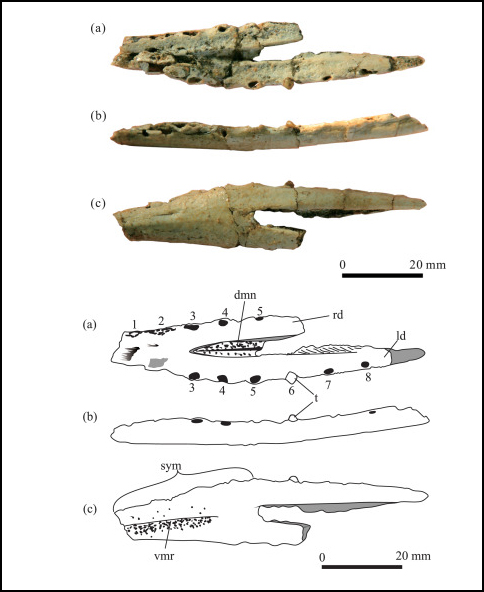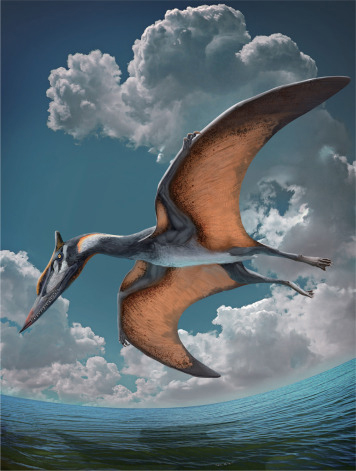Catching Up with Ordosipterus planignathus
Ordosipterus planignathus – The First Pterosaur from the Ordos Region of Inner Mongolia
Time to catch up with developments in the world of the Pterosauria with a brief look at the recently described new dsungaripteroid pterosaur named Ordosipterus planignathus. Researchers from the Chinese Academy of Geological Sciences have described a new species of flying reptile from a partial lower jawbone found in the Ordos region of Inner Mongolia.
Ordosipterus planignathus
This is the first confirmed pterosaur discovery from the Lower Cretaceous deposits associated with this region. The Dsungaripteridae are both geographically and temporally widespread, with taxa known from South America, Asia, North America and Europe as well as China and Mongolia. However, Ordosipterus enlarges the geographical distribution of this kind of pterosaur, from north-western China (with western Mongolia), to central northern China.
A Life Reconstruction of Ordosipterus planignathus
Picture credit: Ji/China Geology
Probing in the Mud for Crustaceans or an Insect Eater
Palaeontologists are uncertain as the trophic habits of these pterosaurs. That is, it is hard to say what these animals ate. Dsungaripteroid skulls are characterised by their stoutness and their study bones. The skulls seem to be reinforced and strengthened to cope with disproportionately large bite forces. These reinforced skulls in combination with the robust teeth associated with this family suggest that these types of pterosaurs might have probed in soft-mud to find molluscs such as snails and bivalves. They may also have fed on hard-shelled insects. The jaws and teeth of dsungaripteroid pterosaurs seem particularly suited to a durophagus diet.
To read a recent Everything Dinosaur blog post that looked at the evidence for probe feeding amongst flying reptiles: The Sensitive Beaks of Pterosaurs.
Only one tooth crown was found in situ, it appears to be short and blunt, perhaps, further evidence of durophagy in this type of pterosaur.
The Holotype Material for O. planignathus with Accompanying Line Drawings

Picture credit: Ji/China Geology
The picture (above), shows the anterior portion of the lower jaws of the recently described flying reptile (a) dorsal view, (b) left lateral view and (c) ventral view. The genus name honours the Ordos region, whilst the species or trivial name translates from the Greek and Latin as “flat-jawed”, in reference to the shape of the lower jaws.
Evidence of a Unique Biota in Northern China/Mongolia during the Early Cretaceous
The finding of a new species of Early Cretaceous (Aptian faunal stage), pterosaur unique to this area of Asia further strengthens the idea that two distinct terrestrial faunas existed. It has been suggested that during the Early Cretaceous, two separate dinosaur/pterosaur dominated biotas could be identified in China and Mongolia. The northern fauna was characterised by the presence of Psittacosaurus and a number of pterosaur genera (including Ordosipterus), whilst the southern fauna was distinguished by an absence of psittacosaurs.
The scientific paper: “First record of Early Cretaceous pterosaur from the Ordos Region, Inner Mongolia, China” by Shu-an Ji published in China Geology.
The award-winning Everything Dinosaur website: Everything Dinosaur.


